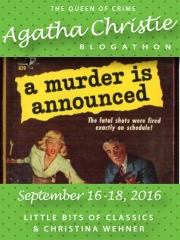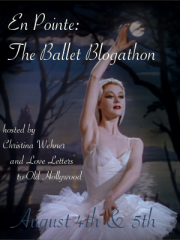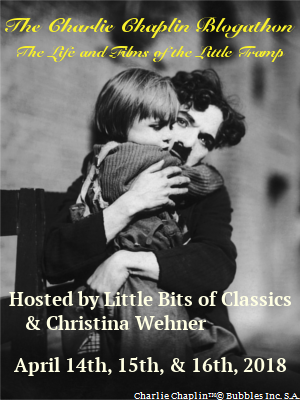So, this year has been a strange year for me, movie-wise. I went nuts at the beginning of the year for ballet and Japanese cinema. That’s almost all I’ve been watching; it’s becoming an obsession. I’ve been trying to watch live recordings of ballets, too. The Royal Ballet, The Bolshoi, Opéra national de Paris, any recordings I can find. I raided my library for all the ballets they possessed and began streaming them from Amazon, but what really got me going was when I purchased from Amazon The Royal Ballet Box Collection, which contains 22 different ballets of varying length. It’s been an absolute bonanza and I have been having to pace myself so I don’t watch all 22 in one month.
One of the things it has made me realize is that, unlike opera, ballet is still very much going strong, with new and successful productions of original ballets, as well as reinterpretations of classic ballets and traditional interpretations. One such original ballet is “A Winter’s Tale”, adapted from Shakespeare’s play of the same name. The choreography is provided by Christopher Wheeldon, one of the most successful contemporary choreographers of ballet, and the music by Joby Talbot, a successful British composer.
The story of the ballet follows that of the play, though somewhat trimmed. Leontes (Edward Watson) is king of Sicily, who suddenly and unaccountably takes it into his head that his wife, Hermione (Laura Cuthbertson), is having an affair with his best friend, Polixenes (Federico Boneli), king of Bohemia. He banishes the friend and puts his wife on trial, which results in his wife dying, his son dying, and his rejection of their baby girl, who he believes is not really his child. The baby girl is abandoned, but fortunately rescued and raised by a shepherd.
The next act is considerably lighter in tone, choreography and color. It is mostly a party, with the shepherds dancing and Leontes daughter, Perdita (Sarah Lamb), now grown, becoming engaged to the son of Polixenes, Florizel (Steven McRae), though neither knows of the other’s identity. When Polixenes discovers that his son wants to marry the daughter of a shepherd, he is furious and Perdita and Florizel flee to Sicily, where, in the next act, all is revealed, along with one big surprise.
I’ve recently been thinking about the similarities between ballet and silent films (and recently learned at Movies Silently that dancing and ballet and silent films actually have a long and close history): they both can employ pantomime, both use the physical body to express emotion or tell a story, both require music, and both feature people of remarkable physical ability (think of Fairbanks or Chaplin and many others).
What was interesting is how much a plot-heavy ballet, like the first act of “A Winter’s Tale” reminds me of a silent movie. Especially because Wheeldon’s choreography is further from traditional ballet and employs many modern dancing elements. It is not as “leapy” as classic ballet. And traditional ballets, like “Sleeping Beauty” or “Swan Lake” generally have microscopic plots that set up banquets or balls or weddings or birthday parties so that massed groups of people can be present to dance. There is not actually that much plot to further. But there is more in “A Winter’s Tale,” which means that characters have to interact and communicate more using pantomime and dance. Leontes has to use dance to communicate his growing jealousy, which is presented like a creeping sickness of mind and body.
The second act, on the other hand, is more traditional. We have our mass of people dancing, simply to celebrate rather than to specifically advance a plot point, and we get a romantic pas de deux (essentially a dance that is a duo). It is more free and open, less restrained, to match the less claustrophobic atmosphere of the outside. The Sicilian court, on the other hand, is grim.
It’s marvelous to see how ballet has changed. In musicals, it has been said that the song and dance must advance the plot. That is harder to do in ballet because a good part of the reason people watch ballet is for the sheer beauty of the dance, but it still needs a plot to give the dances emotional resonance (usually, though there are many plot-less and beautiful ballets) and it is fascinating how modern ballets have also adapted so that increasingly the dance is integrated into the story. I have occasionally read complaints about certain ballets that they do not contain enough dance (or enough pas de deux), so it seems like a tricky line to walk so that the performance does not become a highly skilled pantomime show, but remains dance. I think “Winter’s Tale” succeeds very well, however. I’ve thoroughly enjoyed watching it and highly recommend it to all lovers of the ballet.
This post is my second contribution to “En Pointe: The Ballet Blogathon,” hosted by myself and the wonderful Michaela, Be sure to read all the other posts, all of which have been marvelous.








Katrina Morrison
August 6, 2017 at 3:11 pm
Lovely post….I like your observation about the similarity between silent movies actors and the ballet performers. I love the way ballet interprets a story with the human body…😊
LikeLiked by 1 person
christinawehner
August 6, 2017 at 3:17 pm
Yes! I think that must be one of the great appeals of ballet…so incredibly expressive.
LikeLiked by 1 person
Michaela
August 6, 2017 at 5:17 pm
Wow! Those sets and costumes are gorgeous! I have so many YouTube videos to watch thanks to this blogathon, and you’ve just added a few more. I also didn’t realize the Royal Ballet released that collection… this could be dangerous to my bank account…
I can be one of those people who complains about not enough pas de deux. I’m completely enamored with watching them. They can be so emotional and beautiful. For the past few years I’ve seen my university’s annual production of The Nutcracker and the duet between the Sugar Plum Fairy and her Cavalier makes me tear up every time.
LikeLiked by 1 person
christinawehner
August 6, 2017 at 8:15 pm
Oh, how lovely to see every year! There’s nothing like seeing it live! I used to see my sister every year in our local dance school Nutcracker (high school and junior high school students mostly) and always loved the pas de deux, too. My sister was a mouse, a soldier, a Chinese doll, a garland, a cook and a snow flake throughout the years. 🙂
Yeah, I came across the collection accidentally and had to promise myself that the Royal Ballet Collection would last me a year and that I would only watch two a month to justify it. 🙂
LikeLike
Patricia Nolan-Hall (@CaftanWoman)
August 6, 2017 at 7:24 pm
Humans find so many ways to communicate beyond the spoken word. We’re fascinating creatures.
A few years ago a neighbour was deriding my spending the day at a silent movie festival. They, on the other hand, were planning a night at the ballet. I suggested perhaps our entertainment choices had some things in common, but they continued to scoff.
PS: I think you should take a short break from your obsession and maybe watch a couple of Looney Tunes or something. Just one day. I hear you can have too much of a good thing.
LikeLiked by 2 people
christinawehner
August 6, 2017 at 8:18 pm
Yes, I think you are right. I’ve already limited my royal ballet collection ballets to two a month to make it last, but probably should slow down on the Japanese cinema. Your idea of Looney Tunes sounds marvelous and fits in perfectly with the idea of communication via visual art.
Ooh, a silent movie festival! I have not been able to see a silent film on the big screen yet, but it sounds delightful!
LikeLike
stephencwinter
August 7, 2017 at 3:35 am
Once again I am so grateful to you for a post on your blog. You have a way of taking my thoughts into unexpected places that are always nourishing. And thank you for the clips from The Winter’s Tale that you so kindly posted. I found each of them quite compelling. Leontes’ dance of jealousy was terrible to watch as was Hermione’s anguish. And the moment when they come together with hints of longing for the love they once knew and the passion and anger that will drive them apart was spellbinding.
I think spellbinding is almost literally what it is. The dancers cast a spell over us all with their bodies. The Paul Hamlyn Foundation used to sponsor a week each year at the Royal Opera House Covent Garden in London to give access to performances of opera and ballet that would normally be out of reach of ordinary people. I used to hire a coach and fill it with people from a poor neighbourhood in Birmingham where I was working at the time. One year we saw a performance of Swan Lake in which a young Darcey Bussel danced Odette/Odile. I remember that there was a beautiful, prayer like atmosphere in the coach on the way back from London depositing us in the grimy neighbourhood from which we had set out in the early hours of the morning. I agree that the great silent movies had a similar effect, and appreciated your reference to Chaplin in particular, but so too did Astaire and Rodgers as I think we have discussed before.
I think that our bodies communicate at a level that is deeper than mere words. We know that through studies on body language but great dancers are able to beguile in a way that is beyond simple description.
LikeLiked by 1 person
christinawehner
August 7, 2017 at 11:26 am
Oh, I didn’t consider Astaire and Rogers, but that’s true. “Beyond simple description.” I used to set myself the exercise of trying to write in words what I felt in music and could never do it. I haven’t tried to write what I feel when I experience dance, but suspect it would be similar.
That is a beautiful story about the very real and deeply moving experience of dance/ballet.
Dance, like silent films, I think must operate as a language beyond language barriers.
LikeLiked by 1 person
FictionFan
August 7, 2017 at 4:37 pm
Looks like a wonderful ballet. I prefer modern ballet, and specifically quite highly plotted, to classical ballet, which I find too formalised, and also treated with too much reverence by audiences at live performances. My sister was a major ballet fan and used to drag me along to every performance we could get to, but I haven’t seen any ballet since she died a few years ago. You’ve reawakened my interest – thank you. I shall seek out A Winter’s Tale, and maybe even see what’s on live this year – Scottish Ballet is my local and they have an excellent reputation. The last one we went to was a new choreography of A Streetcar Named Desire, and it was stunning. Unfortunately I don’t think it’s been filmed.
LikeLiked by 1 person
christinawehner
August 8, 2017 at 6:34 pm
A ballet of A Streetcar Named Desire sounds exciting! I never would have thought to turn that one into a ballet, but I can see how that would work. Northwest Pacific Ballet (in Seattle) is my local one and I’m so excited to be going to see my first professional ballet this September.
I admit it did take me a little while to get used to the formalism of classical ballet. Initially, it seemed a little long and not dramatic enough, but it’s really grown on me.
I’m so sorry about your sister! It’s actually though my sister, too, that I came to ballets. She took ballet for some years and I always went to see her in the dance school performances and she’s the one I started watching them with.
LikeLiked by 1 person
carygrantwonteatyou
August 14, 2017 at 6:51 pm
I’ve seen the play multiple times, and its incredibly bizarre story line is probably better suited to ballet (and yes, trimming). I enjoyed this review so much, and look forward to watching the ballet in action. What a great set of replies too! A joy to read.
LikeLiked by 1 person
christinawehner
August 15, 2017 at 11:10 am
Thanks! I think they took out some characters, though I have not yet seen or read the play. How interesting that it would work better as a ballet than as a play. That we are perhaps more willing to believe certain improbabilities or fantasies when expressed in a less “realistic” fashion?
LikeLike